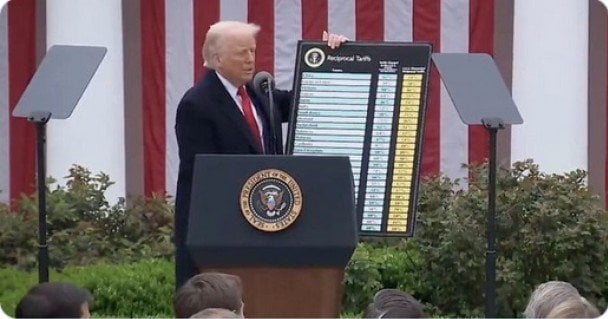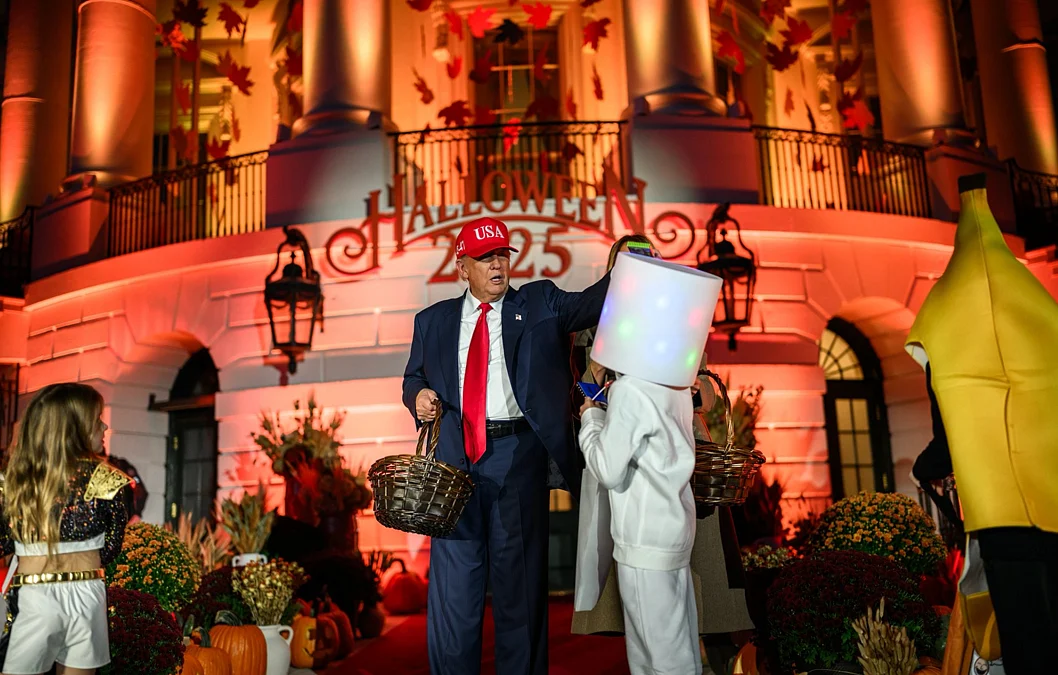Copyright wnd

Six months ago, critics warned that President Donald Trump’s tariffs would crush the economy. They said Americans would face soaring prices and crashing markets. The reality? As we near the end of 2025, the story looks very different. Growth is up, markets are strong, and strategic onshore opportunities are emerging. Let’s break it down. Tariffs are boosting revenue. Rather than dragging the economy down, tariffs have become a colossal source of revenue. Tariff collections hit $100 billion in the first half of fiscal 2025, and U.S. Customs and Border Protection expects that figure to eclipse $300 billion by the end of the year. That money is helping real Americans – supporting military families and making sure our service members receive their paychecks on time during the government shutdown. Tariffs are solving America’s trade problems. Tariffs not only provide immediate benefits but also address America’s long-term structural trade issues. This administration has used tariffs as a strategic tool to bring other countries to the negotiating table, reaping immediate benefits. From trade deals with the U.K., E.U., Japan, and more, President Trump has brought down both tariff and non-tariff barriers on American exports and secured hundreds of billions in new investment – a tremendous boost for American workers and companies. The stock market is thriving. Investor confidence has soared, with major indices hitting record highs. All three major indexes – the S&P 500, Dow Jones, and Nasdaq—hit all-time highs this month, reflecting optimism about economic growth and corporate earnings. Even amid global uncertainty, markets are proving resilient. Inflation is stabilizing. Many Americans feel that prices are higher than ever, and affordability is a daily concern. It’s true – under the previous administration, inflation surged and stretched household budgets. But the Trump administration’s tariff policies have helped slow the rate of price increases. The Federal Reserve’s preferred measure – the PCE Price Index – rose just 0.3% in August, bringing the annual rate to 2.7%, according to the Bureau of Economic Analysis. Core inflation, which excludes food and energy, held at 2.9%, right around the Fed’s target. Given consistent increases in average wage growth, real wages have remained stable. Why hasn’t inflation surged? Because producers in the countries of origin – especially China – are absorbing much of the tariff costs to stay price-competitive in the U.S. market. Consider this: If it costs a Chinese manufacturer 10 cents to make a pair of socks and they sell it for 20 cents, even a 100% tariff raises the export price to just 40 cents. By the time that pair hits U.S. shelves at Walmart for $3, the change is small. Low production costs abroad and strong margins here at home have kept prices stable for consumers. So while consumers are still feeling the pinch, tariffs have prevented prices from rising even faster, and as wages continue to grow and trade deals expand U.S. production, Americans can expect real relief at the checkout in the months ahead. Interest rates are dropping. Thanks to the flow of tariff revenue, the Federal Reserve has been able to lower interest rates. On Sept. 17, it cut the federal funds rate by 25 basis points to 4.00-4.25% – the first cut since December 2024. With expectations of at least two more rate cuts before year-end, it is clear that the dramatic inflationary pressures the left predicted simply haven’t appeared. Economic growth is strong. The U.S. economy is moving at full speed and showing no signs of slowing abruptly. Fueled by consumer spending and business investment, especially in AI, second-quarter GDP growth was revised up to an annualized rate of 3.8%. Manufacturing is coming home. Tariffs are encouraging companies to produce onshore. At the same time, the U.S. has secured large foreign investment commitments – over $550 billion from Japan and $600 billion from the EU. These are the largest foreign investment commitments in American history, generating hundreds of thousands of U.S. jobs, expanding domestic manufacturing, and securing American prosperity for generations. The bottom line: Tariffs are working. The warnings of an economic disaster haven’t come true. Instead, the U.S. economy is growing, inflation is controlled, and markets are confident. These results show that, when used thoughtfully, tariffs can be a powerful tool – not just for revenue, but for national security and long-term economic advantage. We’ve moved from doom to boom, from hesitation to hope, from caution to confidence, from fear to fortune, and from skepticism to success – and we’re now reaping the rewards of our sacrifice since the beginning of the year.



